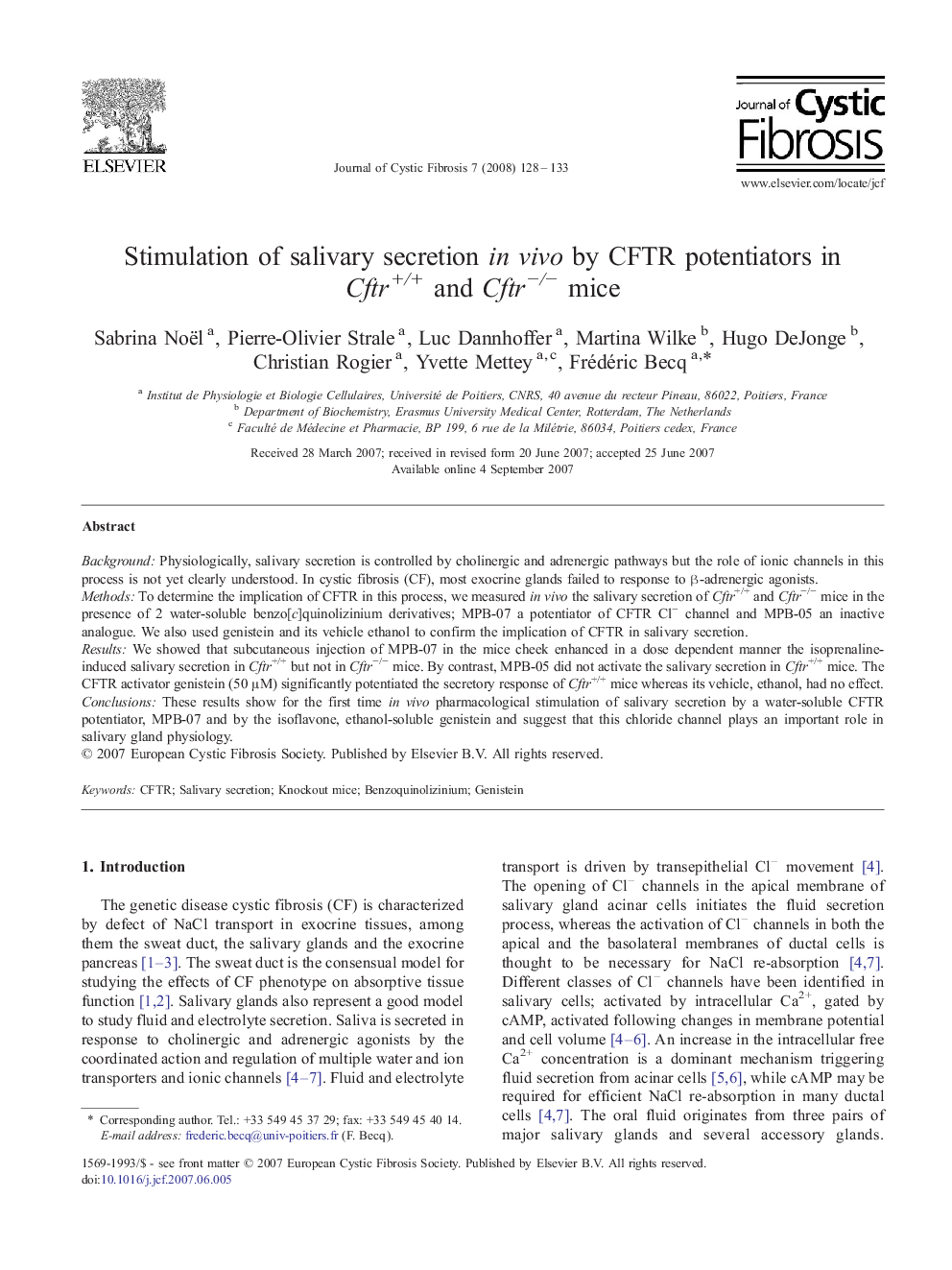| Article ID | Journal | Published Year | Pages | File Type |
|---|---|---|---|---|
| 4209525 | Journal of Cystic Fibrosis | 2008 | 6 Pages |
BackgroundPhysiologically, salivary secretion is controlled by cholinergic and adrenergic pathways but the role of ionic channels in this process is not yet clearly understood. In cystic fibrosis (CF), most exocrine glands failed to response to β-adrenergic agonists.MethodsTo determine the implication of CFTR in this process, we measured in vivo the salivary secretion of Cftr+/+ and Cftr−/− mice in the presence of 2 water-soluble benzo[c]quinolizinium derivatives; MPB-07 a potentiator of CFTR Cl− channel and MPB-05 an inactive analogue. We also used genistein and its vehicle ethanol to confirm the implication of CFTR in salivary secretion.ResultsWe showed that subcutaneous injection of MPB-07 in the mice cheek enhanced in a dose dependent manner the isoprenaline-induced salivary secretion in Cftr+/+ but not in Cftr−/− mice. By contrast, MPB-05 did not activate the salivary secretion in Cftr+/+ mice. The CFTR activator genistein (50 μM) significantly potentiated the secretory response of Cftr+/+ mice whereas its vehicle, ethanol, had no effect.ConclusionsThese results show for the first time in vivo pharmacological stimulation of salivary secretion by a water-soluble CFTR potentiator, MPB-07 and by the isoflavone, ethanol-soluble genistein and suggest that this chloride channel plays an important role in salivary gland physiology.
